Publisher: Amy Marson Creative Director: Gailen Runge Editor: Monica Gyulai Technical Editor: Debbie Rodgers Cover Designer: Page + Pixel Book Designer: Kristen Yenche Production Coordinator/Illustrator: Tim Manibusan Production Editor: Alice Mace Nakanishi Photo Assistant: Carly Marin Photography by Diane Pedersen of C&T Publishing, unless otherwise noted Acknowledgments I had an enormous amount of help writing and sewing for this book. Marcia Harmening sent a photo of The Quilters Primer to C&T Publishing acquisitions editor, Roxanne Cerda. Roxanne then helped me put the book into outline form. And editors Monica Gyulai and Debbie Rodgers beat the book into submission. Lisa Bauer, Marcia Harmening, Dana Hyams, Jane Olsen, Heidi Uselmann, Terri Wangstrom, and Pam Wicks all sewed quilt projects for The Quilters Primer. Aurifil Threads, Moda, and Quilters Dream Cotton supplied thread, fabric, and batting for the quilts.
And lastly, my lovely husband, Don, always knew I could do it, even when I didnt.  Many tips and tricks come courtesy of The Italy Ladies Back row: Heidi Uselmann, Janet McWorkman, Lisa Bauer (in white), Dana Hyams, Jane Olsen; Front row: Terri Wangstrom (in green), Marcia Harmening HOW TO USE THIS BOOK
Many tips and tricks come courtesy of The Italy Ladies Back row: Heidi Uselmann, Janet McWorkman, Lisa Bauer (in white), Dana Hyams, Jane Olsen; Front row: Terri Wangstrom (in green), Marcia Harmening HOW TO USE THIS BOOK  The Quilters Primer, 88 88, designed and pieced by Janet McWorkman, quilted by Linda Weaver The ABCs of Quiltmaking takes its cues from an old-fashioned school primer. Its designed to be used in order, like a workbook. First, learn about the tools, terms, and techniques that are the bedrock of quiltmaking. Expect to refer back to these early chapters often, especially the techniques taught in Quiltmaking Basics. If you come upon a term you dont know, check the Glossary for a definition.
The Quilters Primer, 88 88, designed and pieced by Janet McWorkman, quilted by Linda Weaver The ABCs of Quiltmaking takes its cues from an old-fashioned school primer. Its designed to be used in order, like a workbook. First, learn about the tools, terms, and techniques that are the bedrock of quiltmaking. Expect to refer back to these early chapters often, especially the techniques taught in Quiltmaking Basics. If you come upon a term you dont know, check the Glossary for a definition.
And when a particular ruler, glue, or other product is recommended for a technique and you need to know more, turn to Tools of the Trade. When you are ready to begin sewing, start with the first, most basic blocks. As you work your way through the book, the blocks will get more complicated, building on the skills youve already learned. Many chapters include Key Techniques that you will use again and again. Think of The ABCs of Quiltmaking like taking a course. You will be a very versatile quilter when you graduate! Dont forget that you have the world at your fingertips.
Look online for tutorials demonstrating the techniques explained in the book. Sometimes a video is worth a thousand words. Each chapter has a few blocks that share construction techniques and most include a project or two based on just those blocks. Make a wallhanging or a set of place mats as you build skills. If you stick with the book from start to finish, you also will be able to make a sampleryour own version of The Quilters Primer, an alphabet quilt that requires as many different quilting skills as could gracefully fit into a single quilt. This teaching tool is designed to take you on a journey into the craft of quiltmaking that contains every block in the quilt, plus blocks appliqud with the whole alphabet.
Have patience and take the time to learn the skills needed to make your own primer and you will have the skills to elevate this craft into art. I applaud anyone who starts on a crafting journey, knowing theyll make mistakes. Some skills may take a few tries. But if you work through this book in order, you will get the experience and confidence you need to move to more difficult blocks. MAKE A QUILTERS PRIMER This materials list allows you to plan your whole quilt from start to finish. However, you can also make blocks as you go and let random color combinations emerge, instead of planning out your whole design before you begin.
If you want to design as you go, then you will probably purchase additional small cuts of fabric as you make more blocks and develop a sense of the design of your sampler. Materials Focal fabric: 23 yards, depending on how much you love it Pieced blocks: Start with 810, but eventually you will need closer to 20 quarter-yard cuts (These can be fat quarters.) Background of appliqu letters: 3 yards Appliqu letters: 1 yards of a single fabric or 1 yards of a variety of fabrics Sashing: 1 yards Inner border: yard Outer border: 1 yards Cornerstones: yard Binding: 1 yard Backing: 7 yards Batting: 92 92 (king size) The finished size of each block in The Quilters Primer is 10 10. Each block has a materials list that notes the minimum size of the fabric pieces needed to make the block. You do not need to cut a piece of fabric to this size before cutting the individual pieces for the block construction. GETTING STARTED 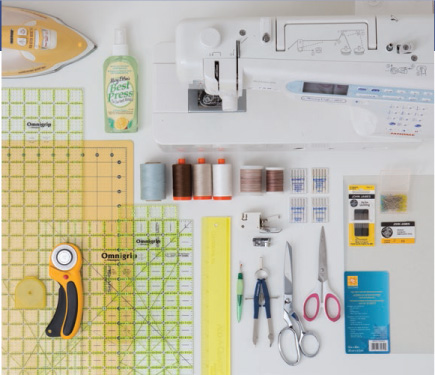 TOOLS OF THE TRADE Quilters collect tools, gadgets, and widgets. Every craft and quilt shop has hundreds of items to assist the quilter, from simple scissors to complex specialty machines.
TOOLS OF THE TRADE Quilters collect tools, gadgets, and widgets. Every craft and quilt shop has hundreds of items to assist the quilter, from simple scissors to complex specialty machines.
Listed in this chapter are the tools I cant quilt without. I promise I wont ask you to purchase items you wont use! When shopping for quilting tools, try them out, if possible. 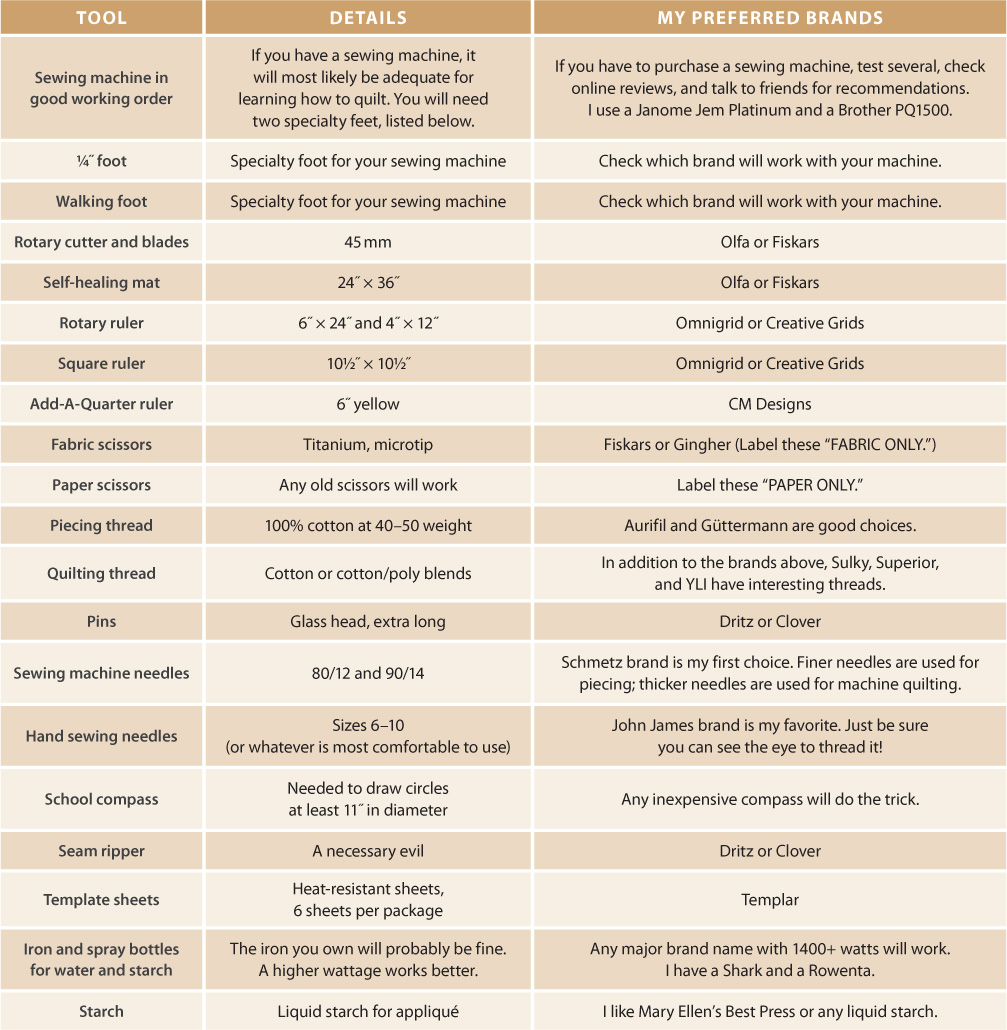 Find a box or plastic tub to store all your quilting tools. Label each tool with your initials where possible. Your tools represent a fairly sizable investment and will give you years of service if treated well. tip A rotary cutter is an extremely useful and dangerous tool.
Find a box or plastic tub to store all your quilting tools. Label each tool with your initials where possible. Your tools represent a fairly sizable investment and will give you years of service if treated well. tip A rotary cutter is an extremely useful and dangerous tool.
Keep it away from children. Make a habit of closing it after each use. Seriously Close it after each use! GLOSSARY Quilting has a language all its own. Knowing the lingo will not only help you understand this book but will also engage you with the entire quilting community. Please review the glossary of quilting termsa fat quarter is not a district in New Orleans. Learn the basic definitions and refer back to them as you progress through The ABCs of Quiltmaking.
Appliqu Sewing fabric pieces to a larger background, typically curved pieces. This can be done by machine, by hand, or with fusible web products. Backing The fabric used for the back of a quilt. Bargello A technique of sewing together many strips of fabric, subcutting these strips, and then arranging them in vertical columns to create undulating waves. Basting stitch A long stitch used for stabilizing edges or holding together two fabrics. It is generally temporary and is often, but not always, removed.
Batik A method of dying fabric that involves wax resist or glue to prevent dye from coloring designed areas. Batting The middle layer of a quilt; provides depth and warmth. Bearding The action of batting coming through to the front or back fabric of a quilt, creating undesirable fuzzy spots. Bias The 45 diagonal between the fabrics cross grain and its selvage. Binding Thin strips of fabric, often doubled, used to finish the outside edges of a quilt. Chain piecing Sewing together fabric units without removing each individual unit from the sewing machine before moving to the next seam.
Cornerstones Squares of fabric placed at the corners of blocks between sashing strips. Crazy quilt A piecing technique that involves improvisation instead of a pattern. Cross grain of fabric The direction of grain or weave running from selvage to selvage. This is also referred to as weft. Dog-ears Points of fabric extending beyond the seam allowance that occur when piecing diagonals. Fat quarter A quarter-yard of fabric subcut widthwise from a half-yard piece, resulting in a piece measuring approximately 18 22.
Next page
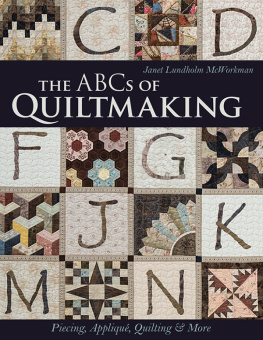
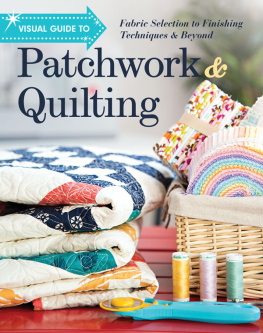
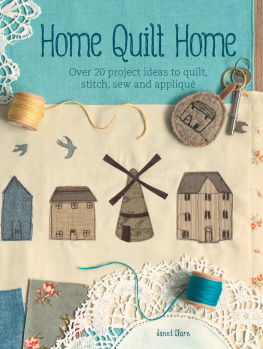
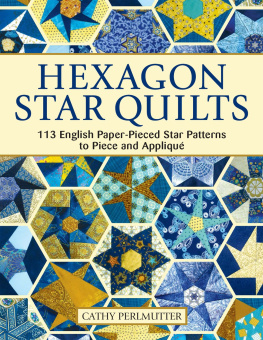

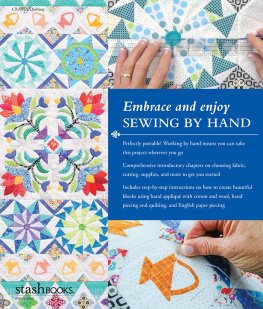
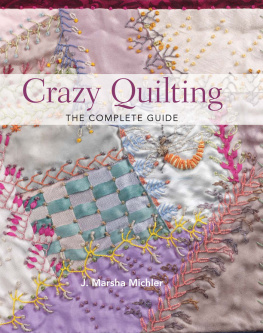
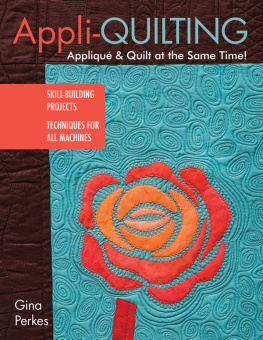
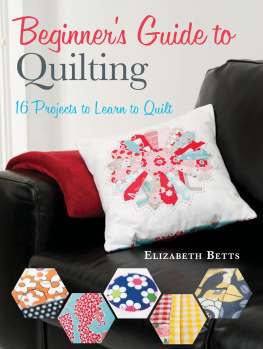
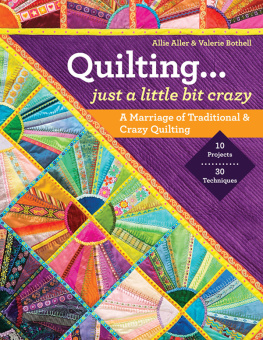


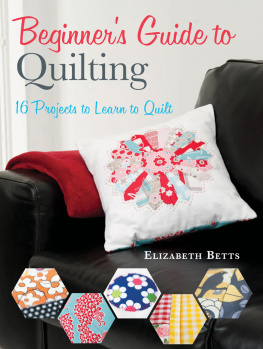
 Many tips and tricks come courtesy of The Italy Ladies Back row: Heidi Uselmann, Janet McWorkman, Lisa Bauer (in white), Dana Hyams, Jane Olsen; Front row: Terri Wangstrom (in green), Marcia Harmening HOW TO USE THIS BOOK
Many tips and tricks come courtesy of The Italy Ladies Back row: Heidi Uselmann, Janet McWorkman, Lisa Bauer (in white), Dana Hyams, Jane Olsen; Front row: Terri Wangstrom (in green), Marcia Harmening HOW TO USE THIS BOOK  The Quilters Primer, 88 88, designed and pieced by Janet McWorkman, quilted by Linda Weaver The ABCs of Quiltmaking takes its cues from an old-fashioned school primer. Its designed to be used in order, like a workbook. First, learn about the tools, terms, and techniques that are the bedrock of quiltmaking. Expect to refer back to these early chapters often, especially the techniques taught in Quiltmaking Basics. If you come upon a term you dont know, check the Glossary for a definition.
The Quilters Primer, 88 88, designed and pieced by Janet McWorkman, quilted by Linda Weaver The ABCs of Quiltmaking takes its cues from an old-fashioned school primer. Its designed to be used in order, like a workbook. First, learn about the tools, terms, and techniques that are the bedrock of quiltmaking. Expect to refer back to these early chapters often, especially the techniques taught in Quiltmaking Basics. If you come upon a term you dont know, check the Glossary for a definition. TOOLS OF THE TRADE Quilters collect tools, gadgets, and widgets. Every craft and quilt shop has hundreds of items to assist the quilter, from simple scissors to complex specialty machines.
TOOLS OF THE TRADE Quilters collect tools, gadgets, and widgets. Every craft and quilt shop has hundreds of items to assist the quilter, from simple scissors to complex specialty machines. Find a box or plastic tub to store all your quilting tools. Label each tool with your initials where possible. Your tools represent a fairly sizable investment and will give you years of service if treated well. tip A rotary cutter is an extremely useful and dangerous tool.
Find a box or plastic tub to store all your quilting tools. Label each tool with your initials where possible. Your tools represent a fairly sizable investment and will give you years of service if treated well. tip A rotary cutter is an extremely useful and dangerous tool.